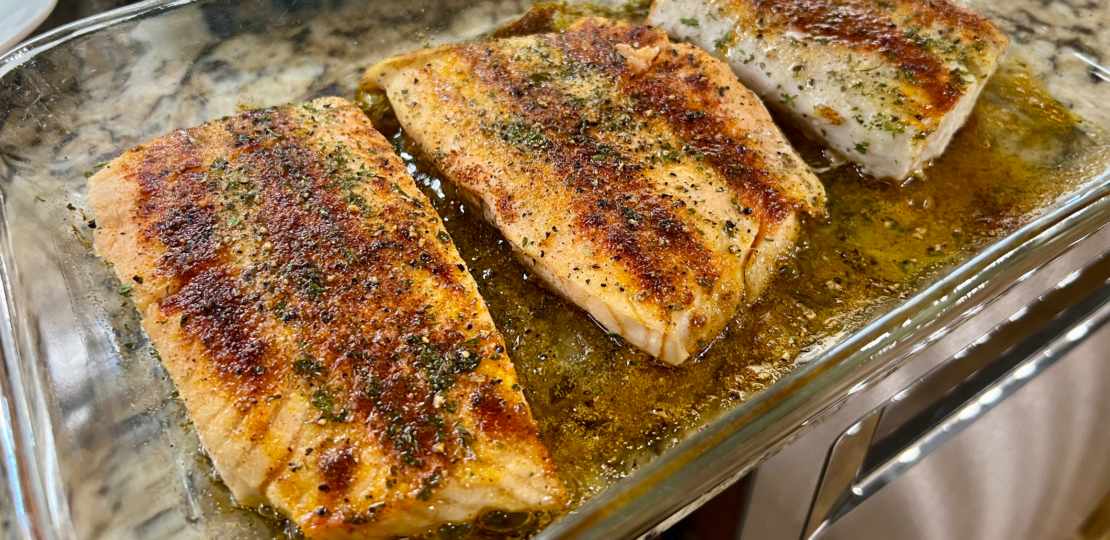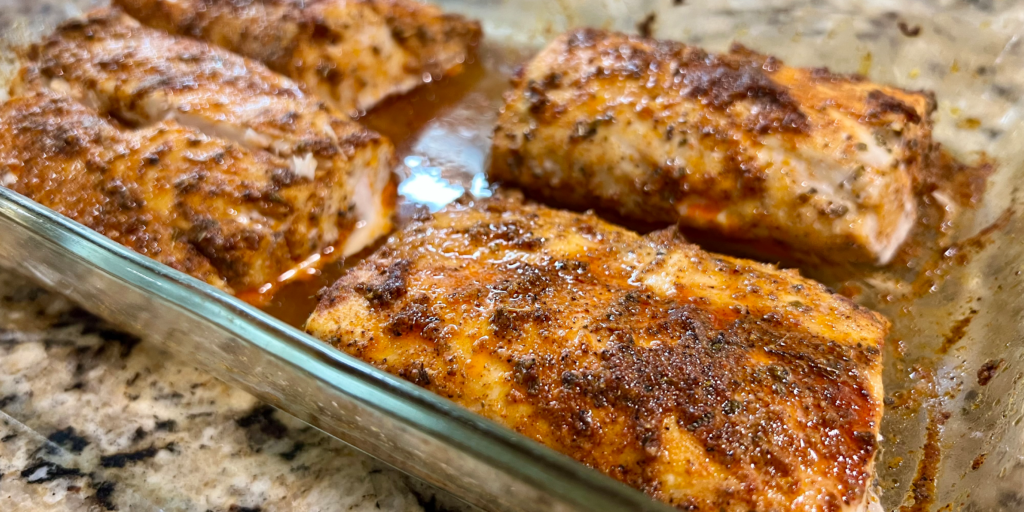A Flavorful Fish Seasoning You’ll Love (Plus Why I’m Eating More Seafood)
April 24, 2025 | by Cheryl Gass

Today, I want to share one of my favorite seasonings for fish and seafood. This magical combination of spices hits just right on the tastebuds—it’s simple, flavorful, and works beautifully on everything from salmon and cod to shrimp and mahi-mahi.
When I first started making changes to my diet, I began following the Mediterranean lifestyle and the diabetic portion plate, which actually complement each other really well. A friend recently said to me, “It’s not just a diet—it’s a lifestyle.” And she’s right. Diets tend to come and go, but a lifestyle is about habits you can maintain long-term. The Mediterranean approach isn’t restrictive—it actually opens the door to a variety of delicious and nutrient-rich foods.
One staple of this lifestyle is extra virgin olive oil, a healthy fat that’s both heart-friendly and full of flavor. It’s rich in polyphenols and Vitamin E, powerful antioxidants that can help reduce inflammation and support overall health. It also happens to be one of the reasons this fish recipe tastes so good!
My Go-To Fish Seasoning
After cutting out processed meats like hot dogs, salami, sausage, ham, and reducing my intake of beef and pork, I was mostly left with chicken and turkey. And let’s be honest—while they can be seasoned well, they can also get a bit boring after a while. So I started exploring more seafood options and fell in love with fish like Mahi Mahi (which has a meaty, steak-like texture), salmon, cod, and flounder, along with shrimp.
During this time, I experimented with different spice blends, especially since I’m not a big fan of lemon on fish. After some trial and error, I landed on the perfect mix. And to my surprise, it worked beautifully on every type of fish I tried!

Here’s what you need:
- Extra virgin olive oil
- Smoked paprika
- Garlic powder
- Oregano
- Salt (optional – omit if you’re watching your blood pressure)
To use:
Coat your fish with olive oil, sprinkle the seasonings on top, and bake at 375°F. The cook time will vary depending on thickness, but your fish is done when the internal temperature reaches 145°F.
For shrimp, I start by boiling them from frozen, then draining them in a colander. In the same pot, I add olive oil, toast the spices for about a minute, then coat the shrimp in the flavorful oil. So simple and so good.
Why More Fish?
Fish is an excellent source of Omega-3 fatty acids, which support heart health, help lower blood pressure, reduce the risk of stroke, and even ease inflammation helping improve illnesses like arthritis. It’s a win-win food.
Note: If you’re pregnant or preparing fish for young children, be sure to check mercury guidelines and safe fish choices from the EPA and FDA here.
Portion Plate Reminder
Following the diabetic portions plate, aim for:
- 50% non-starchy vegetables
- 25% protein (like fish, lean meats or plant based)
- 25% starchy vegetables, whole grains, or fruit
This balance helps keep your blood sugar steady and gives your body the fuel it needs to thrive.
Try Something New
One thing I’ve learned on this journey: when you remove certain unhealthy foods, it opens the door to so many new, exciting foods you might not have considered before. When I feel like I’m in a food rut, I head to the grocery store and pick out a fruit or vegetable I’ve never tried before—it’s a fun way to explore new flavors.
Stay tuned—I’ll be sharing more posts about the new foods I’ve discovered, including a few that were once rare in my kitchen but are now regular favorites in my meals!
RELATED POSTS
View all



